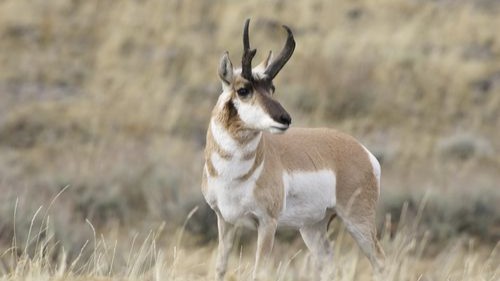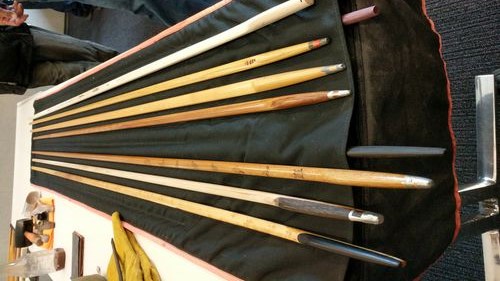Do you know which land animal is the fastest in the United States? It’s not a mountain lion, coyote, or wolf. It’s a pronghorn!
Pronghorn are deer-like mammals that live in the western United States. They can run as fast as 60 miles per hour! Their average traveling rate is 40 miles per hour. The fastest running speed for humans is only 28 miles per hour. Although cheetahs are faster than pronghorns, cheetahs also get tired more quickly. They can only run at top speed for short periods of time. The pronghorn can run for longer distances at high speeds.
Pronghorn also have excellent long-distance vision. They can detect movement four miles away and can see 300 degrees around them. Remember that a complete circle is 360 degrees. People only can see about 170 degrees, including peripheral vision, which is how much you can see on either side of you when you are looking forward.
Pronghorn are reddish-brown or tan and can grow up to about four feet tall. They usually weigh between 90 and 150 pounds. Their most distinctive feature is their horns, which is how they got their name. Both the males and females have horns, but the females’ horns do not get as long as the males’ horns. The horns on males can grow up to 12 inches long, while the females have horns that look a lot like bumps on their heads. On the male (called a buck), the horns grow straight up and then curve slightly toward the buck’s back. The front of the horn has a small notch or prong that points forward. That’s what gives their horns such an unusual look, and explains the other part of the name: put “prong” and “horn” together and you have “pronghorn”!
Pronghorn have one of the longest migration routes of any land animal in the United States. Herds of pronghorn travel about 150 miles each way, a total of 300 miles, between the Upper Green River Basin in Wyoming and Grand Teton National Park.
Pronghorn have a problem, though. While deer can jump over fences as they travel, pronghorn crawl under them—they are not good jumpers. When the bottom part of the fence is made of barbed wire, it can hurt the pronghorn. If the wire is strung too low to the ground, the pronghorn can get tangled in the wire and die, or get cut along their back from crawling under.
Conservationists noticed this problem and decided to help. The National Wildlife Federation (NWF) is using a GPS system to track female pronghorns as they migrate to see the paths they take. After their paths are identified, ranchers will be encouraged to modify their fences. Some fences will be removed, and some will be replaced with wildlife-friendly fences. This helps the pronghorns, and it also protects the cattle owned by the ranchers.
The U.S. Bureau of Land Management in Miles City, Montana, also works to make fences in their region safer for the pronghorn, white-tailed deer, mule deer, and elk.
All of these efforts will help the pronghorn continue to travel such long distances at amazing speeds.









